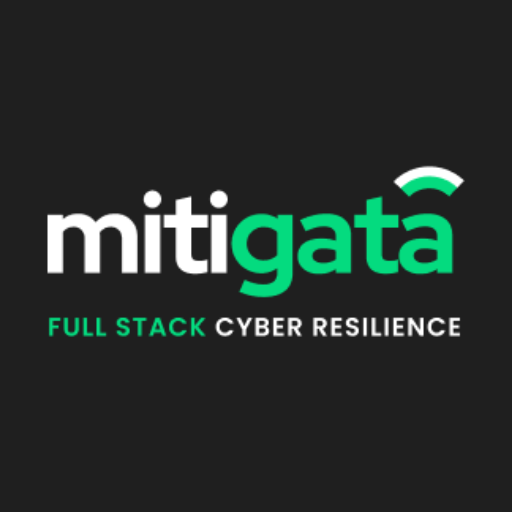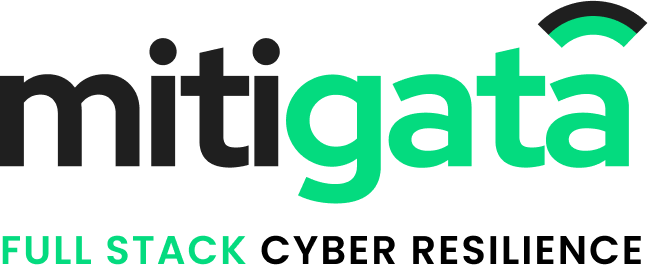Do you count yourself among the 96% of businesses that manually handle patches, leaving systems vulnerable?
It’s time to rethink your strategy. Over 60% of data breaches occur due to unpatched vulnerabilities. It’s more than a threat if it could harm your business more than you imagine.
From huge ransom demands to regulatory fines, businesses also spend an average of 200+ hours of IT staff time recovering from a breach, not to mention the long-term damage to their reputation and operations.
However, patch management tools have changed the complete picture. With innovations like real-time patching, AI-driven vulnerability management, and risk-based prioritisation, companies are able to automate patch management.
In this blog, we will explore how to choose the best patch management tool for your business and the common mistakes to avoid.
Mitigata: India’s Only Full-Stack Cyber Resilience Company
We are India’s first and only full-stack cyber resilience company, trusted by 800+ businesses and offering solutions across insurance, security, and compliance. We are partnered with leading OEMs and offer you the best patch management solution as per your needs.
Here’s what makes us different:
- Best Market Prices
- Zero Training Fees
- Seamless Integration
- Proven Expertise across 25+ industries

What Is Patch Management?
Patch management is the process of finding, testing, and applying software updates (or “patches”) to fix bugs, close security gaps, and improve performance. In cybersecurity, patches are your first line of defence against known threats.
Take an example of the WannaCry ransomware attack, which was caused by an out-of-date and unpatched Windows vulnerability. Even though Microsoft issued the patch 2 months earlier, most organisations did not apply it and continued to use the older versions of Windows.
Patch management tools help take away the effort of tracking updates across many different applications and systems at the same time.
Stay Ahead of Threats, Not Behind on Patches

Key Features to Look for in the Best Patch Management Software
Evaluate your best patch management on the basis of the following features:
Multi-Platform and Application Coverage
If you’re looking for the best patch management tool, make sure it supports all major operating systems, such as Windows, macOS, and Linux, along with hundreds of third-party applications.
Many businesses only patch the operating system, ignoring programs such as browsers, Java, Adobe, or Zoom, which are frequently attacked first.
Intelligent Vulnerability Prioritisation
A good tool should help you decide which patches reduce real-world risk fastest.
It should integrate with vulnerability data to rank patches by exploitability, severity, and exposure level.
Pro tip:
If your patch tool can correlate CVEs with threat intelligence feeds, it can push urgent updates before attackers start exploiting them.
Vulnerability Priority Matrix
| Severity Level | CVSS Score | Response Time | Example Scenario |
| Critical | 9.0-10.0 | Within 24 hours | Remote code execution vulnerability being actively exploited |
| High | 7.0-8.9 | Within 72 hours | Privilege escalation flaw with public exploit code |
| Medium | 4.0-6.9 | Within 7 days | Information disclosure vulnerability requiring local access |
| Low | 0.1-3.9 | Next maintenance window | Minor UI bugs or cosmetic issues |
Your quick guide to the best cloud security companies offering expert support to digital-first businesses.
Flexible Automation
Automation saves time, but it must come with control. Look for tools that let you:
- Create custom patch policies by department, geography, or system type.
- Run test groups before full deployment.
- Schedule deployments during maintenance windows.
- Pause or roll back if a patch causes issues.
Seamless Integration
It should integrate smoothly with your existing security stack: SIEM systems, ticketing platforms, configuration management databases, and vulnerability scanners.
One Dashboard. Total Patch Visibility
Mitigata gives you real-time insights, prioritised patching, and instant rollback capabilities, all built into one simple platform.

Zero-Day Vulnerability Mitigation
In fast-moving threat environments, waiting for a vendor patch isn’t always an option.
Some advanced tools offer pre-built mitigation scripts that shield systems against zero-day vulnerabilities until an official fix arrives.
Compliance and Audit-Readiness
Compliance shouldn’t be a manual nightmare. Your patch management solution should include built-in benchmarks like CIS, NIST, ISO 27001, and PCI DSS, along with clear reports for auditors.
Good tools provide:
- Automatic compliance scans.
- Instant reports highlighting non-compliant systems.
- Detailed remediation steps.
60% of GRC users are still managing compliance manually with spreadsheets. Check which top companies are offering the best automated
GRC tool.
Testing and Rollback Mechanisms
Best patch management tools include staging environments, which allow you to test fixes on representative systems before they are widely deployed. Strong rollback functions are also essential for quickly reverting faulty fixes if issues arise after deployment.
Reporting and Visibility
Look for clear dashboards that track patch progress, system coverage, and failed deployments in real time.
Good reporting gives you the big picture:
- How many endpoints are missing patches?
- Which vulnerabilities are still open?
- What percentage of systems are compliant?
Scalability and Ease of Use
Always choose a tool that scales effortlessly as your organisation grows. Whether you manage 100 or 10,000 devices, it should deliver consistent performance without adding complexity. A clean, intuitive UI with minimal training required is a sign of good design.
Common Mistakes to Avoid When Choosing Patch Management Software
Recognising these pitfalls helps you navigate the decision process more effectively.

Focusing Only on Operating System Patching
Many teams assume patching Windows or Linux is enough but it’s not. Attackers frequently target third-party apps and browser plugins like Adobe Reader or Zoom.
Fix: Choose a tool that covers both OS and third-party applications, along with firmware and web servers.
Ignoring Automation Flexibility
Automation isn’t “set it and forget it.” If a tool applies every patch blindly, it can crash critical systems or disrupt operations.
Fix: Go for a platform that lets you schedule, stage, and test patches, giving you control over automation.
Underestimating Compliance Needs
Auditors look for documentation. If your patch tool can’t generate detailed reports or align with CIS benchmarks, you’ll spend days compiling manual data.
Fix: Look for solutions with real-time compliance dashboards and exportable audit reports.
What really happens inside a Security Operations Center? The answer might surprise you!
Overlooking Rollback Options
An incompatible driver or broken dependency can cause downtime. Without rollback, your only choice is a full restore.
Fix: Always confirm that the tool supports safe rollbacks or snapshot-based recovery.
Forgetting Network Devices and Firmware
Endpoints aren’t the whole story. Outdated firmware on routers, switches, or firewalls can become silent entry points.
Fix: Ensure your patch tool can discover and update network devices as part of its routine scans.
Choosing a “Cheap” but Limited Tool
Low-cost tools often seem appealing but give limited automation, poor reporting, or hidden upgrade costs.
Fix: Focus on value, not just price. Consider scalability, integration, and support quality.
Ignoring Integration and Ecosystem Fit
A standalone patch tool might work initially, but it will create silos later.
Fix: Ensure it integrates with your existing ITSM, EDR, and SIEM systems. This enables unified visibility across your security stack.
Skipping Vendor Support and Training
Even the best tools can be wasted if your team doesn’t know how to use them effectively.
Fix: Choose vendors that offer strong customer support, no-cost training, and hands-on onboarding.
Not Measuring Performance or ROI
Without clear metrics, patch management becomes an invisible process.
Fix: Use tools that provide coverage metrics, patch timelines, and success/failure trends. These insights help prove effectiveness to leadership
Conclusion
Unpatched vulnerabilities remain the primary attack vector in most security breaches. Yet many organisations struggle with patching because they’ve chosen the wrong tools. Choosing the right patch management tool is about balancing automation, visibility, and control.
The best solution not only keeps your systems up to date but also aligns with your broader cybersecurity goals.
Partner with Mitigata and get your free demo now!

